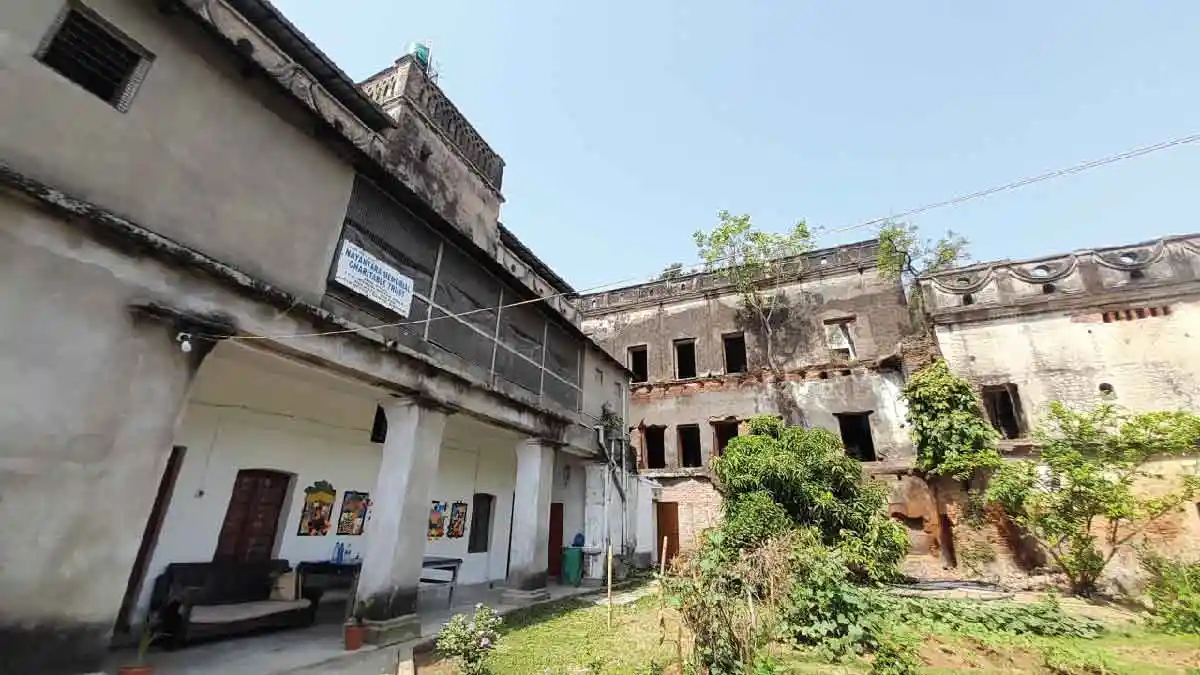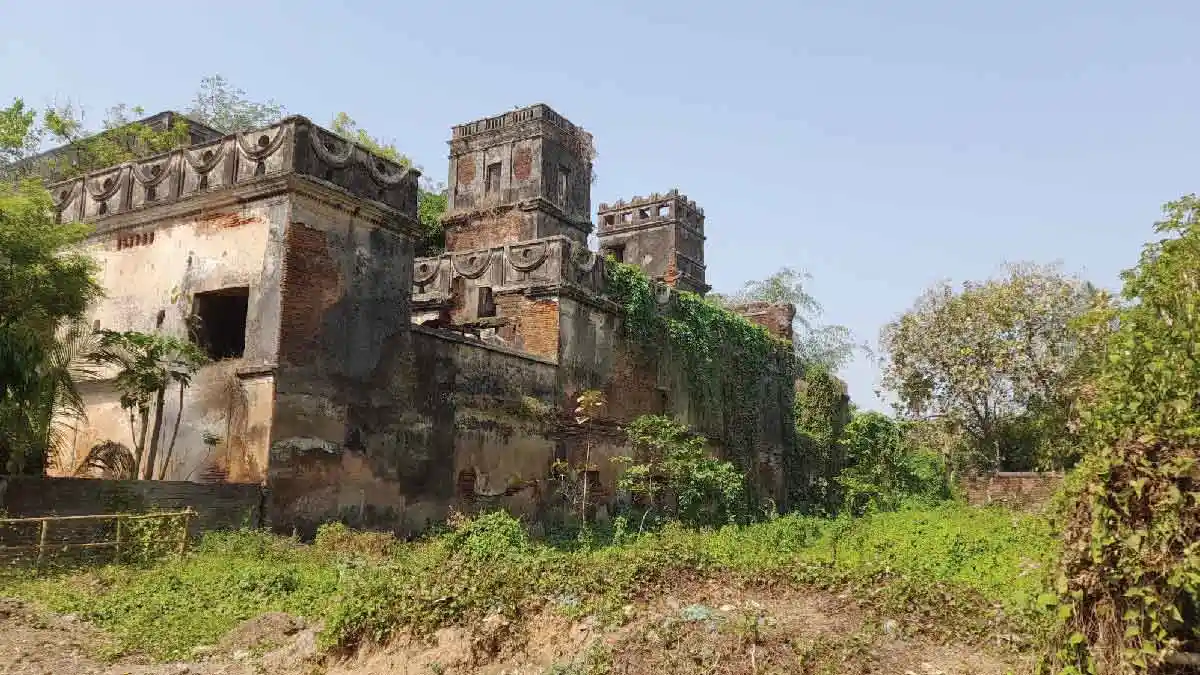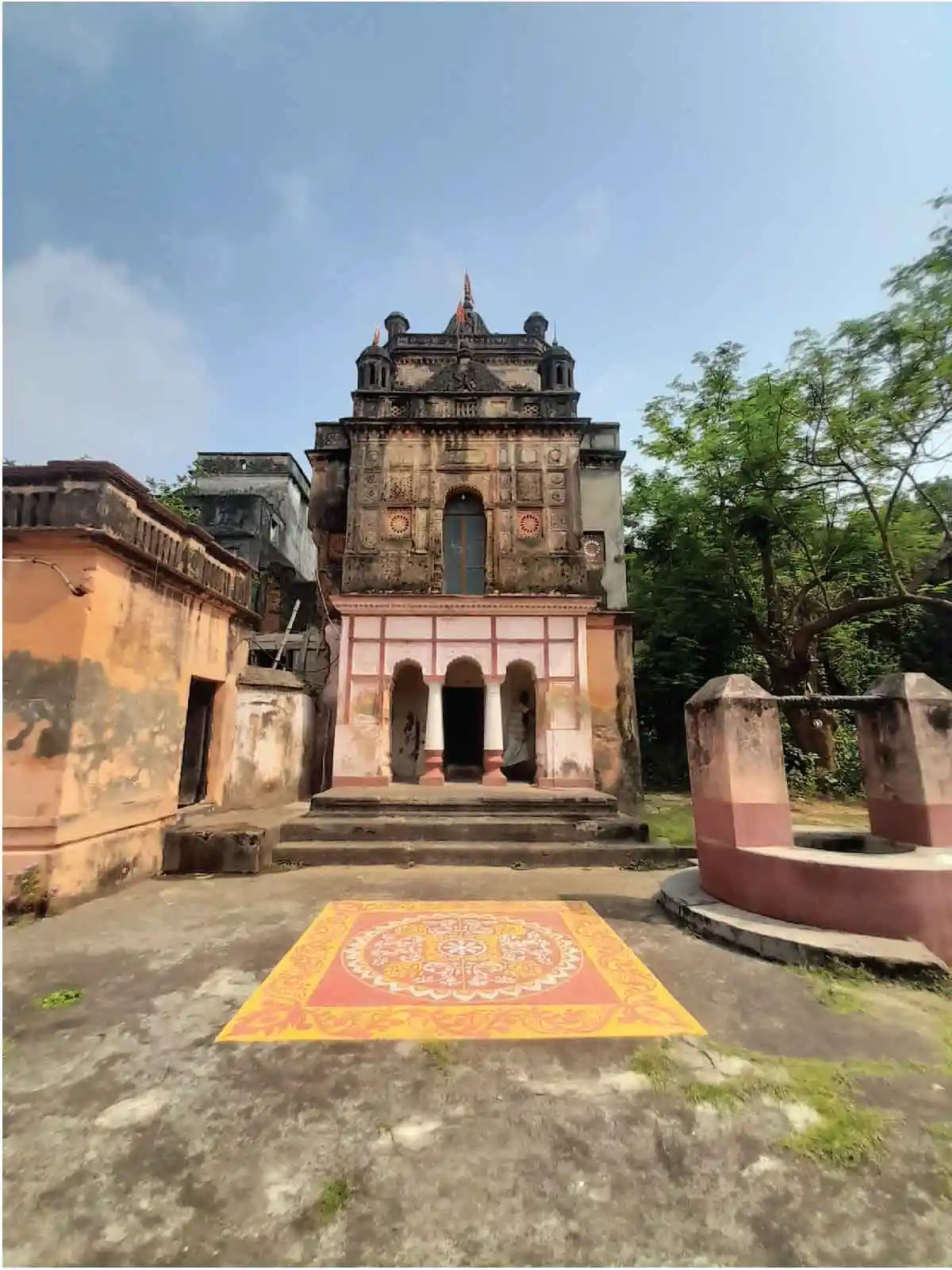Raipur Ruins: A Palace to Remember
Raipur: A small village in Birbhum, West Bengal that was once the home to a Magnificent Palace. But now, we're uncovering the story of this Rajbari from its ruins. To find out its historical roots, its connection to Shantiniketan and the reasons behind its state of decline.

Nayantara Memorial Charitable Trust's Raipur Field Office, Source: Sayantani Majumder
A reminder of aging days, forgotten stories, and the truth of time; The Palace of Raipur was once a celebrated abode of the great Sinha (/Singha) Family, which is now abandoned, decaying in its own ruins.
The Sinha family migrated from the states of Ayodha to Raipur, Birbhum in the 15th century. Over time, this family grew to be very important in their new abode, as they soon became zamindars of Raipur.
Their majestic Palace, often referred to as Raipur Rajbari (Palace in Bengali) or The Lord Sinha Palace was the very testament of their wealth and power, with three wings and 120 rooms and covering over 60 bigha land.
An interesting history of our country lies deeply connected with the members of this palace. One among them is the formation of Shantiniketan.
The majority of Birbhum and nearby areas belonged to the Sinha family. When Maharshi Debendranath Tagore, sat under a Chatim tree to meditate, he discovered unparalleled peace and decided to buy the land around the miraculous tree. It is rumored among the locals that Maharshi bought this land for one rupee from Bhuban Mohan Singha (/Sinha), the then Zamindar of Raipur. He subsequently opened a guest house named Shantiniketan (abode of peace) and thus, birthed the now well-known university town with the same name, which attracts tourists and students from all over the world.
Another subsequent zamindar born into the very same palace, better known as Lord Sinha or First Baron Sinha, Satyendra Prasanna Sinha, made remarkable history for the country under the colonial rule.
Having studied law in England when he was just 17, Satyendra Prasanna Sinha was appointed as the Standing Counsel to the Government of India in 1903 and then as the Advocate General of Bengal twice next, being the first Indian to ever occupy the post. Following this he becomes the first Indian member at the Viceroy’s Executive Council.
He was the assistant to the then Secretary of India, that is Edwin Montago and represented India in the special war conferences of 1917 and 1918 along with the 1919 Paris Peace Conference which was responsible for dealing with the peace terms for the end of World War 1. He was also one of the signatories for the Treaty of Versailles.
After this, he became the Under Secretary of State for India and received his peerage ( A system of honour in Britain) and soon came to be known as Lord Sinha or 1st Baron Sinha of Raipur. The major role of this peerage is of the government, that allows the person to have a seat at the House of Lords in the British Parliament. Until 1977, Satyendra Sinha was the only Indian to be a peer. Also, unlike any other Indian peers that came next, Sinha’s peerage was the only hereditary one.
Lord Sinha made many more notable contributions and had many firsts for an Indian in many situations. His contribution bought him many accolades and fanfare and he was definitely celebrated in his own time. But as work kept him busy at his Calcutta house, the Raipur Rajbari gradually, with each passing generation, became an inaccessible place of residence.
A silver lining to this story of ruins for our present times is how a part of this Rajbari has been restored. In the year 2011, a relatively healthier part of the Rajbari was donated to an NGO called the Nayantara Memorial Charitable Trust that works for the upliftment of the down and destitute communities, along with the Santhal community of Birbhum. This part of the Rajbari is now renovated and running activities regularly, having lit rooms and inhabiting humans, doing good for the society, once again.
The zamindari system ended in the year 1951, the different branches of the Sinha family all subsequently migrated to various different locations and the maintenance of this vast property of a Palace was a task near impossible. The Rajbari is rumored to be abandoned in the 1970s.
It is said that the last living member in the Palace of the Sinha family took all the teak beams out that supported the floors and sold them. This led to all the floors gradually collapsing , leading the Castle to its ruins. The locals often suggest that after the abandonment of the Palace, people or thieves around the village were the ones responsible for the selling of the teak beams, the truth we might never know.
The Palace now stands as a picture of intrigue and horror, a ruin of stories that spark imagination. The locals tell tales of underground dungeons and secret pathways, haunted tales of mighty ghosts and so on.
The Rajbari, having an undistinguishable aura of its own, has often been used for filming a few films, notably the 1984 film called Khandar (meaning “Ruins” which is ironically appropriate) starring Shabana Azmi, Naseerundin Shah and Pankaj Kapoor. Also a 2012 Bengali film called “Jekhane Bhooter Bhoy’ (meaning “where it is to fear spirits") which was shot here and absolutely added to the ghostly atmosphere of its story.

The Raipur Rajbari Ruins, Source: Sayantani Majumder

The Raipur Rajbari Temple that is still taken care of, Source: Sayantani Majumder


